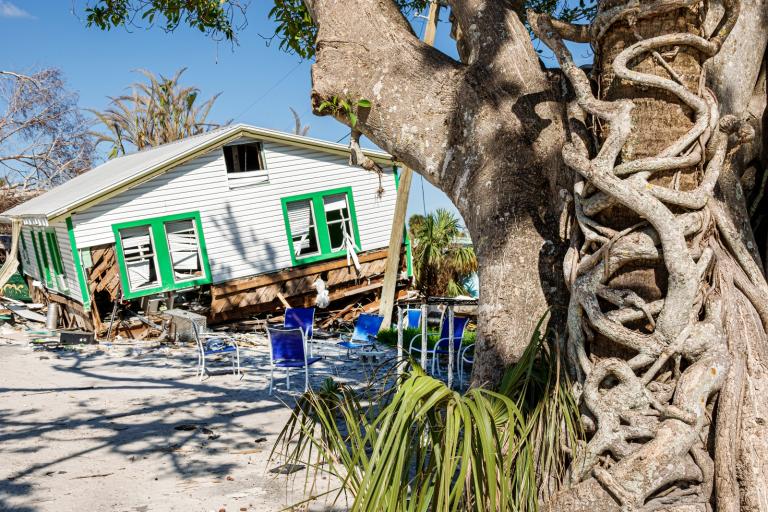Last Monday, thousands of Perth, Australia, residents discovered that the Internet had melted. Australia’s second-largest DSL Internet service provider, iiNet, had crumbled under soaring temperatures of up to 112 degrees — Perth’s third hottest January day on record.
A company statement blamed the outage of its Perth data center on the partial failure of both the main and backup air-conditioning systems. Exacerbating the problem was the heat, which caused iiNet to shut down some of its servers as a precautionary measure.
Rising temperatures and other extreme weather caused by climate change are going to have a heavy impact on infrastructure. A 2013 segment on the public radio show Science Friday mentioned, among other concerns, buckling train rails, melting asphalt, and sagging power lines. But we also need to think about the Internet, which provides an irreplaceable backbone to our working and personal lives.
You may not realize it, but extreme weather, the scarcity and the rising cost of water, as well as high temperatures, could be bad business for technology companies. Water is important to the cooling processes of the information and communications sector, according to a report by Business for Social Responsibility, and increased heat will lead to more energy outages. Far from being anything as ethereal as “the cloud” suggests, the Internet is made of wire, metal, and yes, tubes — and is as susceptible to physical damage from the elements as a power station or phone line.
Extreme weather has already caused a number of online blackouts in the United States. A severe storm in 2012 took down Amazon’s Elastic Compute Cloud in Northern Virginia, briefly knocking out Netflix, Instagram, and Pinterest. Verizon learned a hard lesson in 2012 after Hurricane Sandy caused considerable damage to its infrastructure in Lower Manhattan. Miles of cable were submerged by storm water, and its Broad Street cable vault suffered what Verizon’s executive director of operations, Christopher D. Levendos, called a “catastrophic failure.”
The Internet’s vulnerability has been well-proven, and not just by weather. Take Google’s worries about sharks biting their fiber optic cables, the Georgian woman who knocked out Armenia’s Internet while digging for copper, or the three men arrested in Egypt last year who were reportedly trying to cut the undersea cable that provides a significant portion of Egypt and Europe’s Internet capacity. High temperatures are especially problematic (and more likely than shark attacks), however, because managing a data center is overwhelmingly an exercise in protecting the servers from overheating. A heat spike due to a failed firmware update (not weather) knocked out Outlook and Hotmail for almost 16 hours in 2013. As Slate has noted, data centers often spend as much energy on cooling as computation.
So, do we have to worry about spiking temperatures knocking out the Internet in the United States? Not if our Internet service providers are well prepared. This incident says that this particular data center was not designed to handle heat of that magnitude, Jonathan Koomey, research fellow at the Steyer-Taylor Center for Energy Policy and Finance at Stanford University told me. “To be clear, there are data centers in the Middle East, so there are ways to build them to handle heat like that,” he pointed out. You can make hardened, heat-withstanding servers or even paint the top of the data center white. “We need to design for it, and if we haven’t, we’re going to pay the price,” he said.
The risk of “melting the Internet” shouldn’t be too high, as America’s Internet infrastructure is privately run and heterogeneous, Andrew Blum, the author of Tubes: A Journey to the Center of the Internet, told me. It’s up to the individual network operators and the companies that house them to make sure that their systems are robust enough to withstand outages or extreme heat. In centralized locations — in Lower Manhattan, Virginia, or Silicon Valley, for example — they’ve done a lot to prepare, he said. “The big nationwide networks have done a really good job of making themselves redundant. … There are multiple points of interconnection. If one goes down, they can go another way.” In tertiary markets, though, it’s a complete crapshoot.
Blum recalled a site in Milwaukee that he visited about five years ago. At the time, it was one of the city’s main Internet connection points, he said, but was located in the dank basement of an office building. If Milwaukee had an instance of 112 degree heat (a circumstance more probable in Perth than Wisconsin, of course), it seems unlikely that the center’s temperature regulation could keep up with it. “That’s typical of smaller cities. … Because it’s a neutral point, it’s not clear who is responsible for keeping the lights on and the temperature cool,” he said.
For most American Internet users, it’s service providers like Comcast, Time Warner Cable, or Verizon that lay the pipes. If those companies aren’t mitigating the risks and building resilience and adequate geographic redundancies into their networks, we could be in trouble. The good news, Betsy Page Sigman, a professor at Georgetown University’s McDonough School of Business, told me, is that providers here are likely better prepared for extreme weather than iiNet was. Innovations from companies like Google and Facebook will create better server efficiencies and redundancies, which will probably trickle up to the telecom giants, she said.
Still, with a Comcast and Time Warner Cable merger on the horizon, the consolidation of Internet providers in America might not be such good news for the health of the network. “I would say that competition tends to keep people on their toes, so wherever you have a monopoly, that is something to be concerned about,” Sigman said. Blum made a similar argument: “It points to the elephant in the room — [Internet service] is basically a duopoly. … We can’t choose them based on the robustness of their infrastructure. You just cross your fingers and hope that Comcast and Verizon are preparing for climate change.”
Not least because the size of our telecommunication companies means that a small problem in one data center can have major effects down the pipeline. Time Warner Cable suffered a massive outage in August 2014 after an error during routine maintenance triggered an Internet blackout for many broadband users across the United States. In light of its possible merger with Comcast — a deal that would create the largest cable and Internet provider in the country — it’s an open question whether this consolidation of capacity is the best recipe for resiliency. As Time pointed out after the 2014 incident, if a similar incident occurred after the further unification of the two networks’ infrastructures, millions more subscribers would be affected by a failure of the national backbone of the now megacompany.
Are our Internet providers putting sufficient effort into network resiliency in the face of climate change? Comcast could not comment and Verizon did not respond to my request, but Time Warner Cable told me: “We monitor the network closely at Time Warner Cable and keep a close eye on the redundancy and capacity in our systems to handle any situation that arises such as extreme climate change. There is continuous planning and maintenance to ensure our systems are performing at [their] best.” With upstarts like Google Fiber looking to expand their reach, the market incumbents might have even more reason to keep up to date.
In the end, the very physicality of the Internet means that it can never be completely dependable. We’re relying on air conditioners, switchers, and fueling systems to keep our lives online. We don’t need to be the Chicken Littles of the coming singularity — it’s hard to prepare for something that’s never happened before, as Sigman pointed out. But remember those sharks with a taste for Google’s fiber and the shovel-ready Georgian grandma? Record-breaking temperatures are just one problem among many. Extreme heat, flooding, and other weather phenomena caused by climate change are likely to prove that for the people in charge of our Internet infrastructure, the unexpected is the only thing that’s certain.
 This story was produced by Slate as part of the Climate Desk collaboration.
This story was produced by Slate as part of the Climate Desk collaboration.



